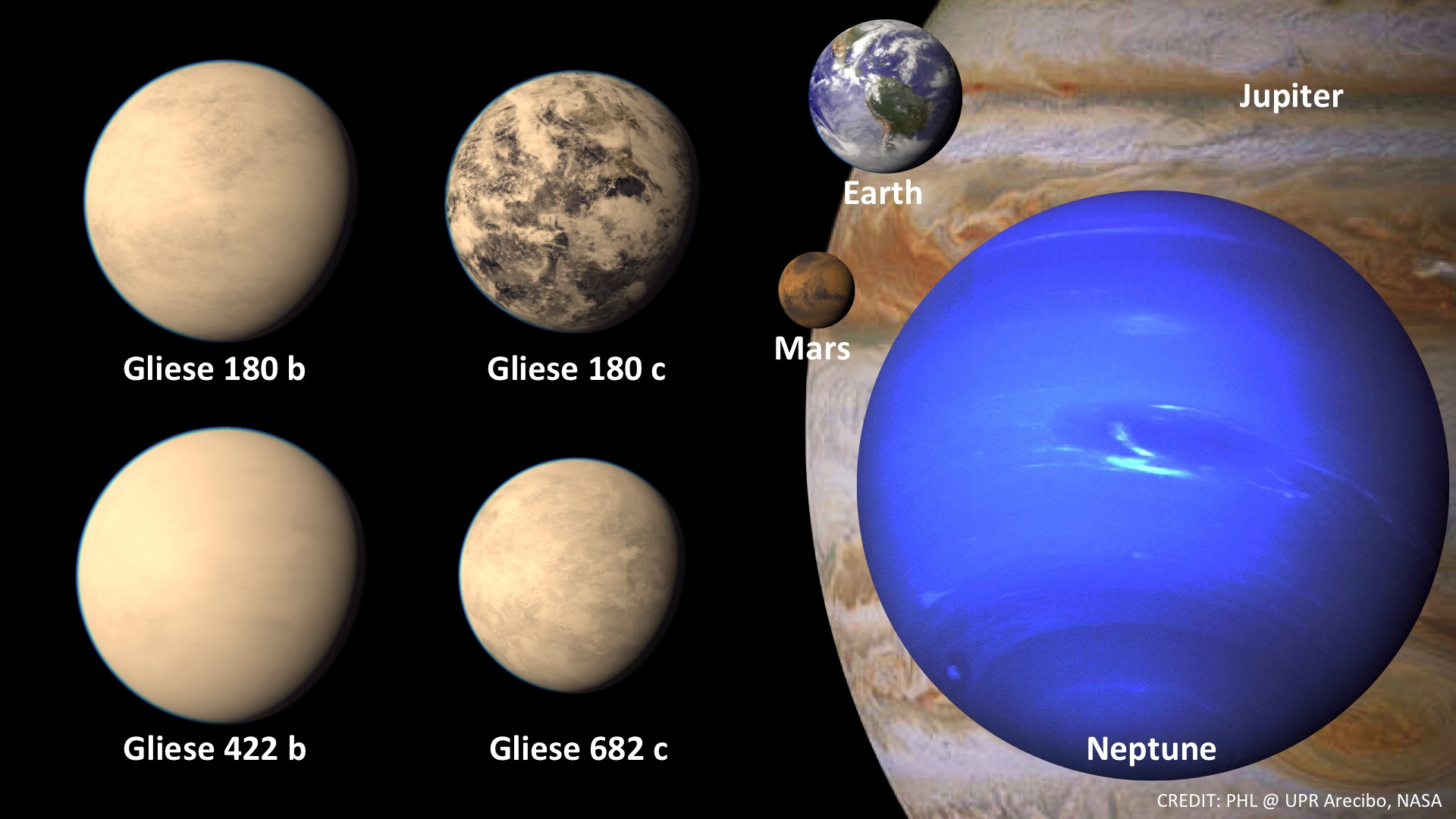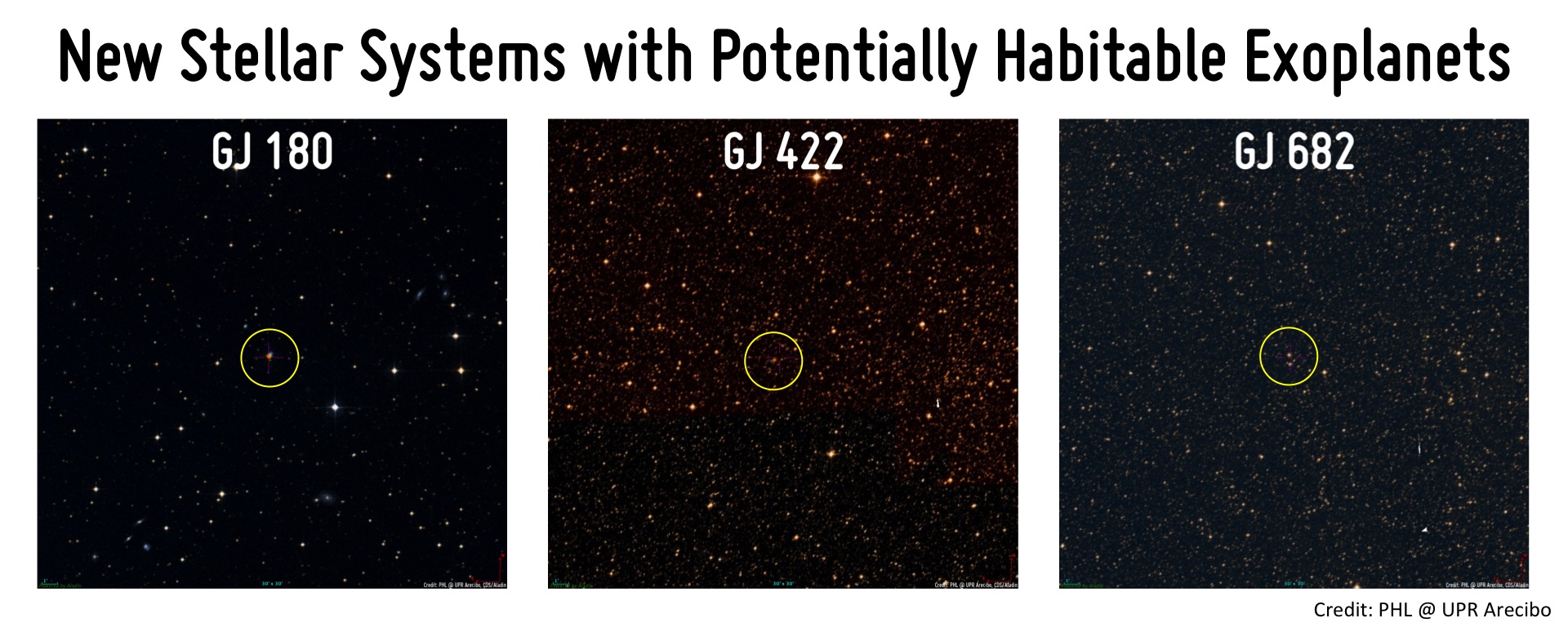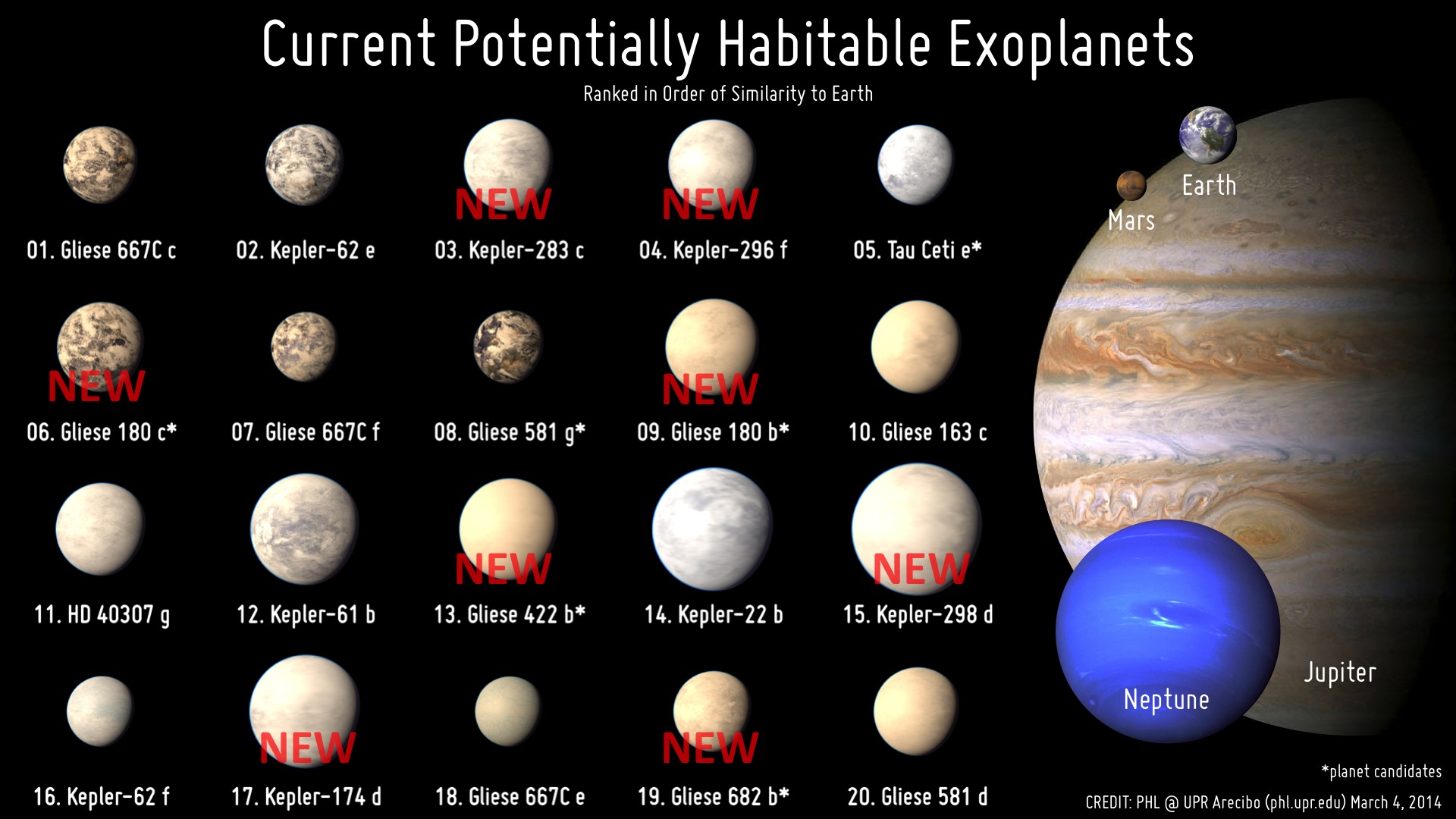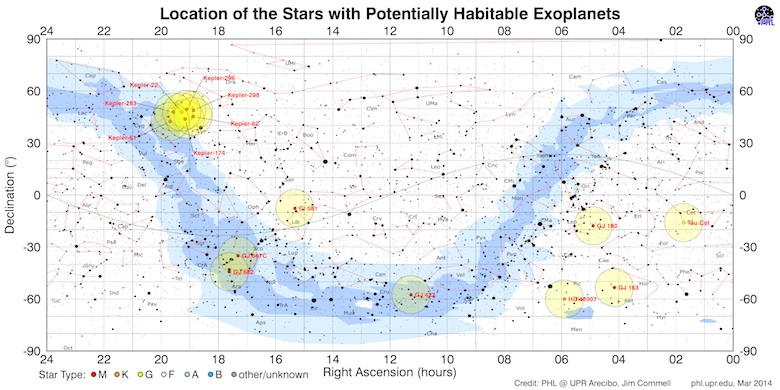
An international team of astronomers led by Mikko Tuomi from the University of Hertfordshire announced the discovery of four nearby potentially habitable super-Earth worlds among eight new planet candidates. They orbit the habitable zone of the nearby stars, Gliese 180, 422, and 682.
These new four planets increase the number of potentially habitable worlds of the Habitable Exoplanets Catalog to twenty, among fifteen stellar systems. Just last week four NASA Kepler planets were also added. The catalog went from twelve to twenty planets in less than a week. Twelve of these are in the Solar Neighborhood, within 50 light years from Earth.
Gliese 180 is 38 light years away and it is the fourth stellar system found with multiple potentially habitable planets, after Gliese 581, Gliese 667, and Kepler-62. The orbital proximity of its two planets is quite remarkable and very rare. The inner planet, Gliese 160 b, has a minimum mass of 8.30 ME and a radius of ~1.8 RE if rocky in composition, just like Earth. Gliese 160 c has a minimum mass of 6.40 ME and a radius of ~1.7 RE if rocky.
Gliese 442 is 41 light years away. Its only planet, Gliese 442 b, has a minimum mass of 9.9 ME and a radius of ~1.9 RE if rocky. This planet could easily be instead a mini-Neptune, rather than a rocky world, due to its large mass, but there is no way to tell at the moment.
Gliese 682 is 17 light years away and the second closest system found with potentially habitable planets, after Tau Ceti. Its habitable zone planet, Gliese 682 b, has a minimum mass of 4.4 ME and a radius of ~1.5 RE if rocky. There is also a second outer and larger super-Earth planet in the Gliese 682 system.
We only know the minimum masses of these new planet candidates but they could be much more massive and therefore non-habitable. The unique orbital architecture of the two particular planets of Gliese 180, if confirmed, better constrain their maximum mass thus improving their chances of being the right size for life. This also improves their chances of being transiting planets and prime targets for atmospheric characterization by future observatories such as the JWST.
Without any information about their size there is no way to tell if these planets are indeed rocky worlds or small gas planets. There is also no guarantee about the habitability of any potentially habitable world as we know very little of them, some even need to be confirmed as true planets. They are only objects of interest for additional observations.
Stellar systems with multiple habitable planets seem to be common. So far, four out of the fifteen (~27%) known stellar systems with potentially habitable planets have more than one. Astronomers have been struggling to determine how common are stellar systems with Earth-like planets in the universe. Today a new question is emerging about how common are stellar systems with multiple Earth-like planets.
Other members of the research team are Hugh R. A. Jones and John R. Barnes from the University of Hertfordshire, Guillem Anglada-Escude ́ from the University of London, and James S. Jenkins from the Universidad de Chile.
Resources
Contact
- Original Research Science Contact: Mikko Tuomi (mikko.tuomi@utu.fi; m.tuomi@herts.ac.uk)
- Habitable Exoplanets Catalog Contact: Abel Méndez, abel.mendez@upr.edu
Images

Figure 1. Artistic representation of the habitable zone super-Earth planets Gliese 180 b and c, and Gliese 422 b and Gliese 682 b. They are represented here as worlds with thick cloud covers that look pinkish due to the reddish light of the red dwarf stars they orbit. Only their minimum masses are known but they are shown with sizes corresponding to rocky worlds, just like Earth. They could be twice as big, almost like Neptune, if they are instead non-habitable gas worlds. Earth, Mars, Neptune, and Jupiter are shown for size comparison. Credit: PHL @ UPR Arecibo, NASA.

Figure 2. These images show the star fields around the new three stellar systems with four potentially habitable planet candidates discovered by astronomers led by Mikko Tuomi from the University of Hertfordshire. The field of view is about the size of the Full Moon. A small telescope is necessary to see these since they are dim red dwarf stars. Credit: PHL @ UPR Arecibo, CDS/Aladin.
Figure 3. The individual orbits of the four new potentially habitable planets discovered by astronomers led by Mikko Tuomi from the University of Hertfordshire. Two are around the star Gliese 180, and the other two around Gliese 422 and Gliese 682. Note that each frame shows only the orbit of one planet at a time for simplicity. Click the frames to enlarge. Credit: PHL @ UPR Arecibo.

Figure 4. The new lineup of twenty potentially habitable exoplanets according to the Habitable Exoplanet Catalog including four new ones from NASA Kepler and the four new ones discovered by astronomers led by Mikko Tuomi from the University of Hertfordshire. Six out of these twenty planets are still unconfirmed.
Figure 5. Location in the night sky of the now known fifteen stellar systems with potentially habitable worlds. New ones are Gliese 180 in the constellation of Eridanus, Gliese 422 in Carina, and Gliese 682 in Scorpius. Click the image to enlarge. Credit: PHL @ UPR Arecibo, Jim Cornmell.
Article Credit: The Planetary Habitability Laboratory @ UPR Arecibo (phl.upra.edu)












